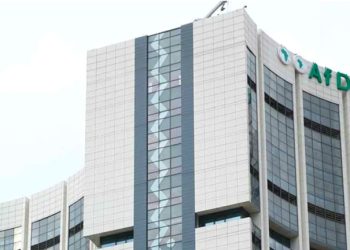
The government’s domestic debt reached N$123.51 billion by the end of September, reflecting a month-on-month increase of N$2.04 billion, latest data reveals.
According to research firm Simonis Storm, fixed-rate bonds (GCs) contributed significantly to this growth, accounting for 63% of the increase through the issuance of N$1.27 billion in GCs.
In contrast, inflation-linked bonds contributed a modest 4%, totalling N$80 million. The Bank of Namibia exceeded its initial borrowing plan to issue N$745 million in government bonds, likely to meet financial obligations for October.
From the start of 2024, government bond yields have experienced significant compressions, particularly within the 10 to 20-year tenors.
“The yield on the GC40 decreased by 139 basis points, while the GC37 saw a decline of 128 basis points. On average, yields narrowed by 79 basis points between January and September,” said the firm in its latest report.
Earlier in the year, yields were on a moderate upward trajectory, with the GC50 reaching a peak of 14% in April.
However, this upward trend reversed as markets began anticipating interest rate reductions, resulting in a steady decline in yields.
“Treasury bills (TBs) saw a net issuance of N$685 million, with the 182-day and 273-day TBs showing higher issuance relative to maturing debt. The latest GC25 switch auction demonstrated heightened demand, with a nominal amount of N$1.04 billion tendered and nearly N$945 million successfully switched,” said the firm.
Meanwhile, the report noted that this auction reduced the outstanding amount on the GC25 to approximately N$2.60 billion.
As a result, the firm said: “the total outstanding government bonds maturing by the end of 2025, which include the GC24, GC25, and GI25, decreased to N$5.83 billion.”
Looking ahead, Simonis Storm said the Bank of Namibia faces significant financial obligations in October, including coupon payments across multiple bonds (GC24, GC25, GC26, GI27, GC28, GC32, GI33, GC40, and GC48) and the redemption of the GC24, valued at N$1.27 billion, excluding its final coupon.
This comes after in preparation for October’s coupon payments, the Bank of Namibia announced the index ratios for the GI27 and GI33 inflation-linked bonds.
Meanwhile, in the secondary market, a nominal amount of N$170.5 million was traded in September, an increase from the August volume of just under N$149.6 million.
“Inflation-linked bonds observed higher levels of trading activity, with approximately N$32.0 million traded—predominantly from the GI25—compared to a mere N$2 million in August,” said Simonis Storm.
All inflation-linked bonds (ILBs) are traded at a premium given their index ratios.
“The GI25 has the highest index ratio, which saw a deal with a nominal amount of N$23.9 million trade at a consideration 1.5 times greater than its nominal amount. For fixed-rate bonds, the longer end of the curve (GC40 to GC50) represented 49% of secondary trades on GCs, with GC45 recording the highest total trade volume at N$40 million,” said the firm.











